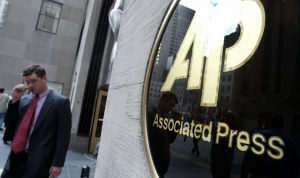Two major news organizations have come to a split decision about whether to run ads in sheep’s clothing.
From Brendan James’s piece in the International Business Times:
Associated Press Rolls Out Native Advertising Network
The Associated Press might look like one of the few news outlets today exempt from the tyranny of the “impression” that’s slowly eating away at media. Unlike most outlets, the AP makes most of its money not off ad revenue but via subscription services to its news wires.
But the AP is only as healthy as its members, and those members are still very much tied to the click economy and its diminishing returns. With that in mind, the famous global news network is getting into the ad game in a big, and somewhat particular, way: It’s opening up its digital advertising shop for its subscribers, offering an inventory of sponsored content alongside its inventory of news stories.
The Economist, on the other hand, has arrived at exactly the opposite conclusion. Here’s what Ashwin Sridhar, Senior Vice President, Global Head of Economist Digital Products Revenue, said in an interview with the World Association of Newspapers and News Publishers:
[W]e will never do native advertising. Again there are many definitions of native advertising. To me, native advertising is content that comes from advertisers or
sponsors that masquerades as content from editorial. We are not going to do that because we don’t think our readers come to us to read a message from our sponsors . . .
What we are saying is that we will not use native advertising, which is misleading our readers into thinking content from our sponsors is actually content from editorial. That would be brand-damaging and we’re not going to do that.
AP global director of digital services Paul Caluori, on the other hand, believes it can avoid that brand damage.
“You have to be clear that the ad was created by ‘Brand X’ or else readers will go in with a different impression, and that’s not good for anybody. We don’t want to undermine the AP’s hard-earned reputation for fairness, clarity, reliability, trustworthiness.”
Except, of course, it most likely will. At least if native advertisers have anything to say about it.
John R. Carroll is media analyst for NPR's Here & Now and senior news analyst for WBUR in Boston. He also writes at Campaign Outsider and It's Good to Live in a Two-Daily Town.
John R. Carroll has 305 post(s) on Sneak Adtack
